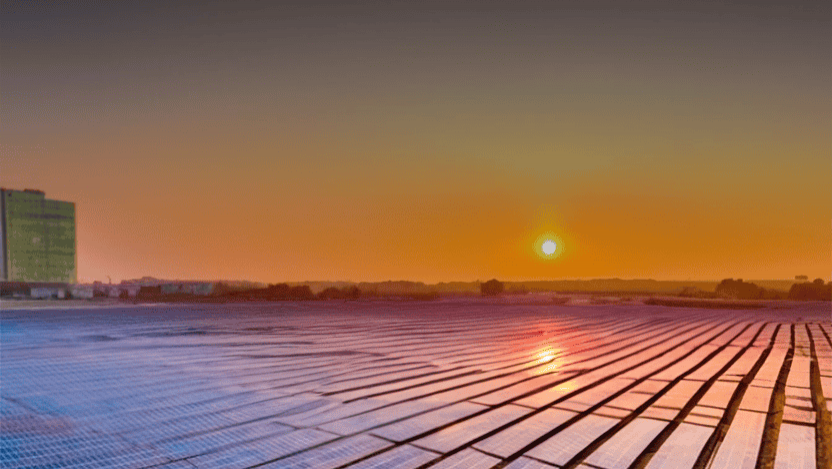Surat depends on steady industrial growth. Textile units. Chemical units. Diamond polishing units. These operations need reliable power. Any interruption hurts production immediately. Many companies in the region built their own captive plants earlier. They used gas or coal. That worked for some time. It feels less reliable today.
Energy security continues to be the goal. The path keeps changing.
Fuel costs rise. Grid tariffs increase. Rules for emissions keep getting tighter. Renewable power looks more practical for owners who want long term control of electricity. It reduces cost exposure. It reduces compliance worries. It improves business reputation.
A solar energy companies in India executive once told me that industrial owners care the most about consistent power. That remains true. Captive plants based on renewable sources must meet that expectation. The future for Captive Power Plants in Surat depends on making that consistency real.
The Shift From Fossil Fuel Captives to Renewable
Captives
Gas based captive plants once looked like the smart choice in Surat. Prices changed. Uncertainty grew. Coal units face increasing regulatory pressure and pollution concerns. These plants will remain for some time. They will not lead the future of captive power.
Solar and wind cost less over the life of the plant. They avoid carbon issues. They receive strong policy support. Gujarat has strong solar potential. Not using it would be a missed opportunity.
This shift will take years. Thermal power will not stop suddenly. It will lose importance each year as renewable capacity increases.
Solar Brings Value But Needs Support for Reliability
Factories run at all hours. Solar works during the day only. Batteries support night operations but cost more for heavy industrial loads.
A balanced approach works better. A mix of solar with another source ensures power through every shift. Some plants use gas to cover short gaps. Others join group captive wind projects in coastal areas of western India. Some use smart load planning around daytime solar peaks.
The perfect solution does not exist. A combination that keeps production stable is enough.
Policy Will Decide Speed of Adoption
Captive power rules in India change often. Banking limits. Transmission charges. Cross subsidy issues. These sometimes slow project approvals. Even with uncertainty, policy direction remains clear. New investments in fossil fuel captive plants face limits. Renewable captive power gets support. Surat industries understand how to move forward in this type of environment. They plan for the long term. They act as rules become clearer. The journey is steady. Adoption grows year after year.
Digital Monitoring Supports Daily Operation
Older captive units needed physical checks at frequent intervals. New renewable plants depend on data. Real time monitoring shows output and faults instantly. That matters in large industrial zones like Hazira where downtime costs rise fast. Sensors and software create a live view of system performance. Small problems get noticed early. A few percentage points of improved efficiency protects payback. It also supports stable power for the plant. Monitoring is not optional anymore. It ensures that a renewable plant performs as expected.
Industry Behavior Will Change With Energy Use
Renewable captive plants give power control to nature. Sunlight and wind vary. This creates hesitation in industrial management. Over time, that hesitation reduces. Production schedules start using more daytime capacity when solar is available. Efficiency becomes a planning focus. Management teams track data and output regularly. They make decisions faster. Teams understand more about every unit of electricity used. This shift improves the overall quality of operations. It also increases confidence in renewable power.
Financing Models Will Expand
Many factories still prefer to own their captive plant. That will continue. Other models are growing. Group captive. Long term supply contracts. Pay per generation arrangements. These provide flexibility. They suit different sizes of investment. Some solar energy companies in India now offer plant performance guarantees. They take risk on output. They get paid when energy is delivered. This model only works because the technology and data tracking have improved. Trust grows with performance. Performance grows with experience.
New Industrial Development Will Drive Faster Adoption
Surat keeps expanding outward. New parks and new industrial zones plan for renewable power from the start. They want clean power built into the infrastructure. That supports investor confidence and export competitiveness. Western India is forming a strong identity in clean industry. Energy is a central part of that identity. Captive renewable power protects against fuel cost swings. It reduces emissions. It offers long term certainty. Growth becomes more stable. That strengthens businesses and supply chains.
A Look Ahead
Picture a plant in western India in the next decade. Solar supplies daytime energy. Wind supports nighttime. A small battery system fills short gaps. Gas remains for emergencies. Every part is tracked. Very little power is wasted. The operation stays stable throughout the year. This outcome feels realistic. The transition is already visible today. It only needs time and steady investment. Captive Power Plants in Surat will keep supporting industry growth. They will run quietly in the background. They will reduce cost pressure. They will reduce environmental impact. Owners will appreciate the stability. Progress feels slow sometimes. It moves forward anyway. Renewable captive power will become a standard part of industrial planning in western India.









